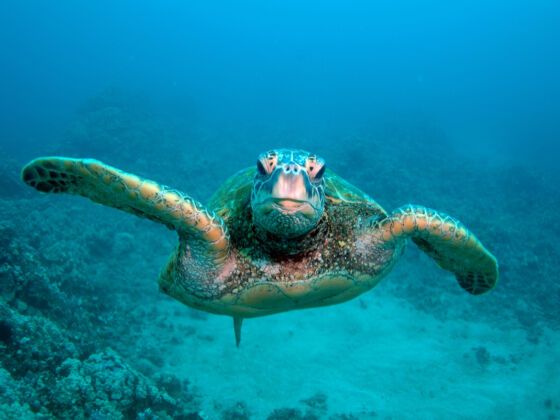Weighing a leatherback
Jack counts the turtle’s breaths per minute. Thomas takes blood samples from her left rear leg.
- “How many?” Jean-Yves asks.
- “33 eggs thus far,” Barbara answers. “Another 50 or 70 to go.”
- “Shit, way too fast,” the team leader mumbles and speeds up what he’s doing.
As the leatherback closes her nest, Jean-Yves drills a hole in one of the ridges of her shell and installs two small devices that will track the animal’s movements over the next ten days. Insight into what these turtles do and where they go during the ten-day interval between their two nestings will help scientists better protect the critically endangered species.
